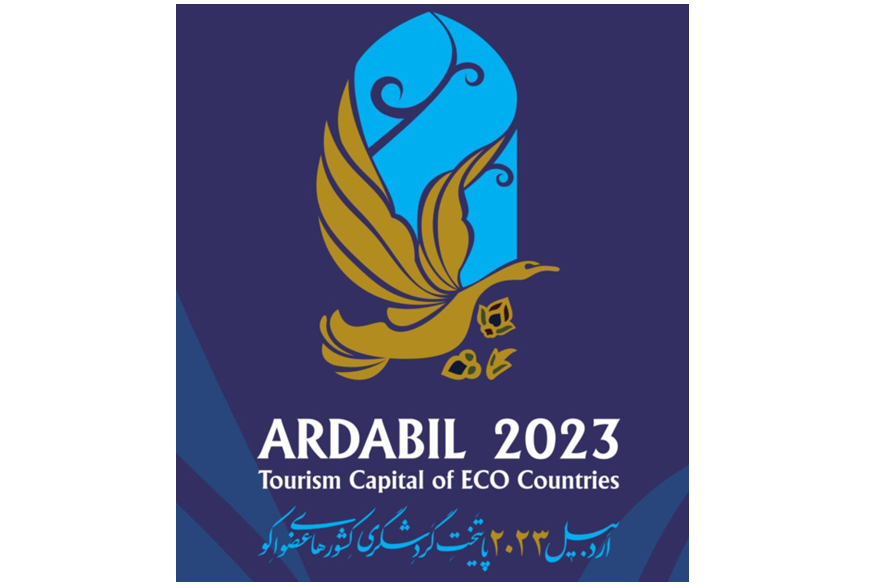Ardabil Province is the twenty-fifth inscribed province of the country, located in the northernmost point of Iran. It covers an area of over 18,011 square kilometers, bordered by the Republic of Azerbaijan to the north, Gilan Province to the east, Zanjan Province to the south, and East Azerbaijan Province to the west. Geographically, it lies between 37 degrees 45 minutes and 39 degrees 42 minutes north latitude and between 48 degrees 55 minutes and 47 degrees 3 minutes west longitude. The average annual rainfall in the province ranges from 250 to 600 millimeters. According to the latest national divisions, Ardabil Province includes the counties of Ardabil, Bileh Savar, Parsabad, Khalkhal, Meshkinshahr, Moghan, Namin, Nir, and Kowsar (Kiwi).
History
According to historians, the name Ardabil is derived from “Ard” and “Vil.” “Ard” refers to the 25th day of each month and is also the name of one of the angels in Zoroastrianism, meaning “lawful” and “sacred.” “Vil” is an ancient Aryan word meaning “city.” Thus, Ardabil means “holy city.”
Throughout history, this city has been important due to its unique natural conditions and strategic location. Various ancient sites from pre-Islamic times have been discovered in this province, and numerous monuments from different governments of the Islamic periods have been preserved. The ancient site of Yeri, nicknamed the city of Yeri, near Meshginshahr, indicates the millennia-long history of human settlement in this province.
The peak of Ardabil’s glory can be attributed to the Safavid period when the Sheikh Safi al-Din Ardabili dynasty ruled.
Geography
Ardabil Province, surrounded by the Sabalan, Talesh, and Bozgush mountains, is bordered by Zanjan Province to the south, East Azerbaijan Province to the west, and Gilan Province to the east. Part of Iran’s common border with the Republic of Azerbaijan is also located in the north of this province. Ardabil is famous for its abundant hot springs.
Climate
Being surrounded by high mountains and snow-capped peaks makes this province one of the cold provinces of Iran. Therefore, the best time to travel to this place is spring and summer when the weather is milder. However, for snow and cold lovers, Ardabil is an ideal destination in winter.
Counties
Ardabil
The city of Ardabil is one of the coldest cities in Iran. Its name is recorded on Sumerian tablets and has a history dating back five thousand years. Most of the people make a living through agriculture, and Ardabil is rapidly industrializing.
The mausoleum and shrine of Sheikh Safi al-Din are the most important tourist attractions in this city, which is also included in the UNESCO World Heritage List. In addition to the tomb of Sheikh Safi al-Din Ardabili, the mausoleum contains several other tombs of great figures, including Shah Ismail I (the first king of the Safavid dynasty) and his wife. The mausoleum of Sheikh Amin al-Din Jabraeil is another important historical shrine in Ardabil.
Ardabil is home to Lake Shorabil, one of the largest natural lakes within a city in Iran. Recreational facilities such as boating, cycling, and a walking path around the lake are provided.
The Jameh Mosque of Ardabil, or Friday Mosque, is a relic from the Seljuk period, and the historic bazaar of Ardabil is another historical attraction in the city. Among the historical houses of Ardabil are the Sadeghi House, Ershadi House, and Seyyed Hashem Ebrahimi House.
There are several historical bridges in Ardabil County, including the Ibrahimabad, Haft Cheshme, Naderi, Seyyedabad, and Yaghoobiyeh or Panj Cheshme bridges. Some of these bridges date back to the Safavid period.
Neor Lake is a natural tourist attraction in Ardabil County, located about fifty kilometers from the city. There are beautiful hiking and walking trails around this lake leading towards the border of Ardabil and Gilan provinces.
Meshgin Shahr
Meshgin Shahr is located at the foot of Mount Sabalan and next to the Meshginchay and Khiau rivers. It was formerly known as Khiau.
The historical site of Yeri is one of the most important tourist attractions in Meshgin Shahr. Carved stones of the city of Yeri are of the most attractive parts of this ancient area, with images of people without mouths carved into them.
The Meshgin Shahr Suspension Bridge is a modern structure that is 365 meters long, making it the longest suspension bridge in the Middle East. Crossing this bridge offers a beautiful view of the Meshgin Shahr Forest Park.
There are several historical castles in Meshgin Shahr County, including Kohneh Castle, Qahqaheh Castle, and Div Castle.
Included in the list of Iran National Natural Monuments, Sabalan highlands are posits close to Meshgin Shahr. Besides mountain climbing to the peak, its heights and hillsides have also provided picturesque landscapes for nature trekking.
Namin
Namin is located in the border area between Iran and the Republic of Azerbaijan. The moderate climate of this city is influenced by the humidity and fog coming from the Caspian Sea. Some evidence suggests that the choice of the name Namin, meaning “moist,” emphasizes this fact.
Ten kilometers away from Namin, you can visit the Fandoghlu Forest, a lush area covered with chamomile flowers from late April to late June. During this time of year, wild chamomile flowers cover an area of several hundred hectares.
Soha Lake is another natural tourist attraction in Namin County, located near a village of the same name. Soha Lake is about forty kilometers away from Ardabil.
Heyran Strait on the road from Astara to Ardabil is also one of the most exciting roads in Iran.
Khalkhal
Known as Horaabad until 1358 SH, Khalkhal is located in the southern part of the province. Some archaeological findings date the history of this city back to the second half of the first millennium BC.
The Asalem-Khalkhal Road is one of the most spectacular roads in Iran; An 80-kilometer forest road bridging between the city of Asalem in Gilan Province to the city of Khalkhal in Ardabil Province. A winding road passing through forests and mountains.
Sarein
The city of Sarein is famous for its abundant hot springs, which attract many travelers to this city. There are many spa complexes and hot springs in operation in Sarein. The ancient hill of Anahita and the Alvares Ski Resort are other tourist attractions in the city of Sarein.
Accommodations
You won’t find luxury hotels in Ardabil, instead, there are several mid-range hotels in the city. Sabalan Hotel is one of them. Mahdi Hotel, Darya Hotel, Shoorabil Hotel, and Negin Hotel are other options.
In Sarein, however, there are many hotels, including the Laleh Hotel, Royal Park Hotel, and Ershad Hotel, which are good hotels in the city.
There are also several eco-lodges in Ardabil province, including Shouon Eco-lodge, Bajilar Sardabeh Eco-lodge, Kazaj, and Eco-camp Maleksooyi.
Handicrafts
Varni is one of the handicrafts of Ardabil province; It is woven using wool or silk threads, or a combination of both, and is sometimes used as a rug. The Ilsovan tribes in Dasht-e Moghan are one of the major producers of Varni.
Other handicrafts of Ardabil province include Kilim, Jajim, wood carving, traditional socks, and felt. Mafrash and Ojaq Qaraqi are other handicrafts with which the tribes of Ardabil province are occupied.
Local Foods
Ash-e Miveh is one of the unique traditional foods of Ardabil province, which is made from dried fruits. Ash-e Doogh is another cuisine made from chickpeas, rice, local yogurt, vegetables, and more.
Pichagh Gheymeh is a delicious food combined of almonds, meat, onions, eggs, and mulberry leaves. Saj Kebab or Saj Ghoorma should also not be forgotten. This dish is prepared with meat, onions, animal fat, dried lavash bread, yogurt, garlic, salt, and pepper.
Khashil is a popular Ardabil food in cold seasons, which is made with date syrup (honey), cracked wheat, flour, butter, cinnamon, and sugar.
Souvenirs
Honey, Sarshir, and local butter are special souvenirs of Ardabil province.
Halva-e Siyah is one of the old and famous snacks of the region. Baghlava and Fatir bread are tasty sweets and breads in Ardabil province.
Customs and Traditions
Among the various customs in the cities of this province, the ritual of “Parche Kasdi” can be mentioned, which is now only practiced in some areas of the province. Parche Kasdi was a female ceremony held before the wedding day, where family members sewed clothes for the bride.
The customs of Nowruz and mourning during the month of Muharram are other traditions that are held with the same traditional atmosphere in the cities of the province.
Celebrations of the ECO Tourism Capital in 2023
Ardabil City of the Islamic Republic of Iran was declared as ECO Tourism Capital for 2023. The event organized on April 27, 2023 was graced by the presence of H.E. Mr. Ezzatollah Zarghami, Minister of Cultural Heritage, Tourism and Handicrafts of the Islamic Republic of Iran, H.E. Mr. Seyed Hamed Ameli, Governor of Ardabil Province, ambassadors and diplomats based in Iran, Secretary General of ECO as well as the heads of Iranian Tourism Business Associations.
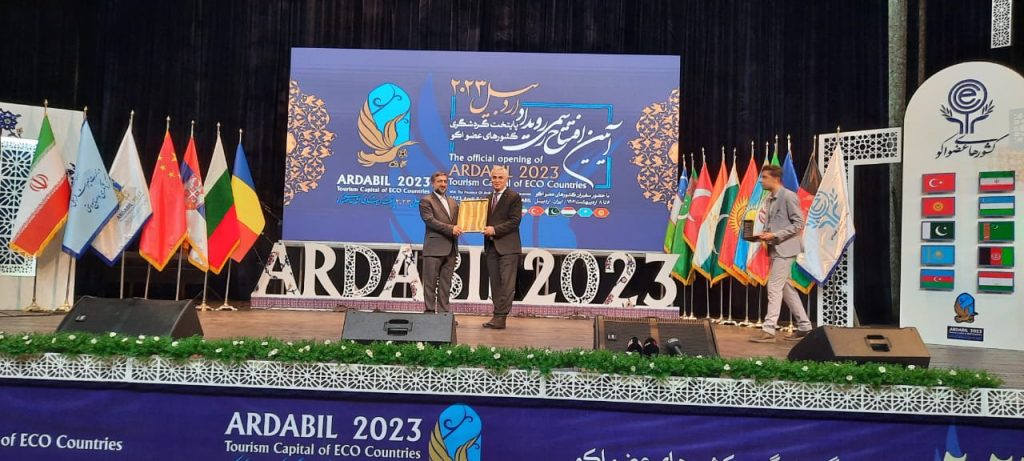
Inaugurating the festive ceremony, the Governor of Ardabil Province, H.E. Mr. Seyed Hamed Ameli stated that selection of Ardabil as the ECO Tourism Capital 2023 will serve as a gateway to the beginning of extensive communication and cooperation between Ardabil Province and ECO Member Countries in the fields of tourism, economy, agriculture, industry and culture. He highlighted that ECO is considered as the most influential regional organization in various fields playing a significant role in the development of economic, cultural and tourism relations.
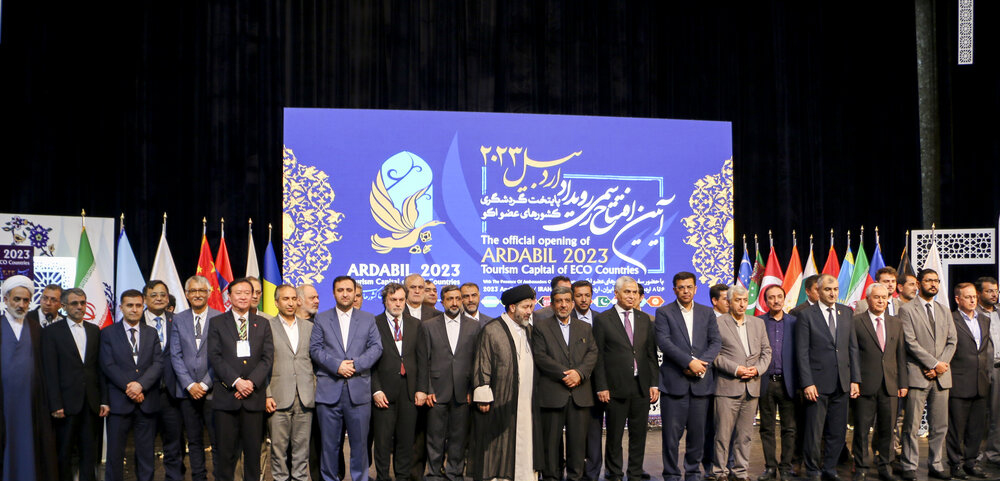
The Governor General also informed the audience about the huge tourism potential of Ardabil Province and mentioned that the province plays a key role as a gateway between Iran, Russia and the Caucasus region. He also noted the importance of reviving silk road destinations for more tourist attraction into the region.
The ECO Secretary General Ambassador Khusrav Noziri presented a Certificate to the Governor of Ardabil Province regarding the declaration of Ardabil city as the ECO Tourism Capital for 2023. The Secretary General highlighted that being home to 74 UNESCO registered World Heritage Sites, the ECO region is a fascinating tourism destination with its natural endowments, diversity of historical and cultural values as well as evocative memories of the ancient Silk Road.
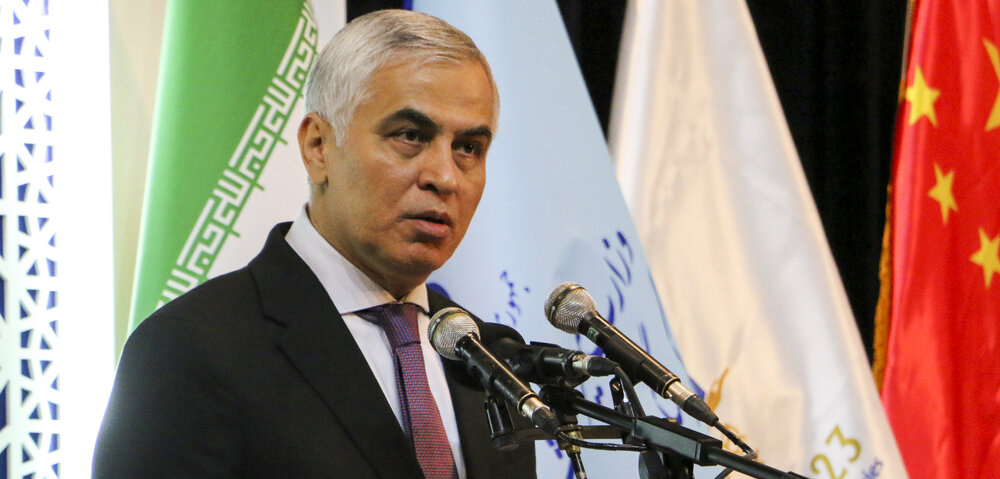
Recalling the selection of Ardabil as the ECO Tourism Capital for 2023, he expressed that Ardabil is famous for having lush natural beauty, hospitable people, and its silk and carpet trade tradition. Various ancient sites from the pre-Islamic era and many relics of different Islamic dynasties discovered in this province reveal the roots and traces of an ancient civilization in this region while the name of the city is recorded on Sumerian Tablets, depicting the history of about five thousand years, and also repeatedly mentioned in Shahnameh, which establishes the city’s importance in ancient Iran, he remarked.
The Minister of Cultural Heritage, Tourism and Handicrafts of the Islamic Republic of Iran, H.E. Mr. Ezzatollah Zarghami congratulated the authorities of Ardabil Province and ECO Secretariat for the successful coordination of the event. Expressing gratitude to ECO Member States for selection of Ardabil as ECO Tourism Capital 2023, he noted that tourism is the best public diplomacy which facilitates interactions between peoples and cultures.

On the sidelines of the event, a joint meeting between tourism stakeholders of ECO Member States, the Secretary General of ECO, Deputy Minister of Cultural Heritage, Tourism and Handicraft of the Islamic Republic of Iran and ambassadors and diplomats of the ECO countries discussed opportunities for enhancing regional interaction and cooperation in the tourism sector.
Ardabil hosted 5th ECO Ministerial Meeting on Tourism
The 5th ECO Ministerial Meeting on Tourism, preceded by the High Level Expert Group (HLEG) Meeting was held on October 4-5, 2023 in Ardabil, Iran. The Ministers and high level representatives from the Member States, as well as the ECO Secretary General attended the meeting. The D-8 Secretary General Ambassador Isiaka Abdulqadir was invited to the event by the host country as a special guest.
The meeting was chaired by H.E. Mr. Ezzatollah Zarghami, Minister Cultural Heritage, Tourism and Handicrafts of the Islamic Republic of Iran. Honourable Minister, while welcoming the participants, stated that the ECO Member States should utilize their capacities in order to foster peace and solidarity, integration and regional cooperation in the areas of transportation, energy, trade and tourism. Honourable Minister emphasized that tourism industry had been acting as one of fast-growing economic sectors and had been the most significant pioneers of the economic growth in the world during recent years. Having national beauty, ethnic diversity, miscellaneous traditions and historical and cultural heritage, the ECO region has the potential to become a leading tourism destination in the world. In this context, he also highlighted the importance of the protection of the environment and cultural heritage sites.
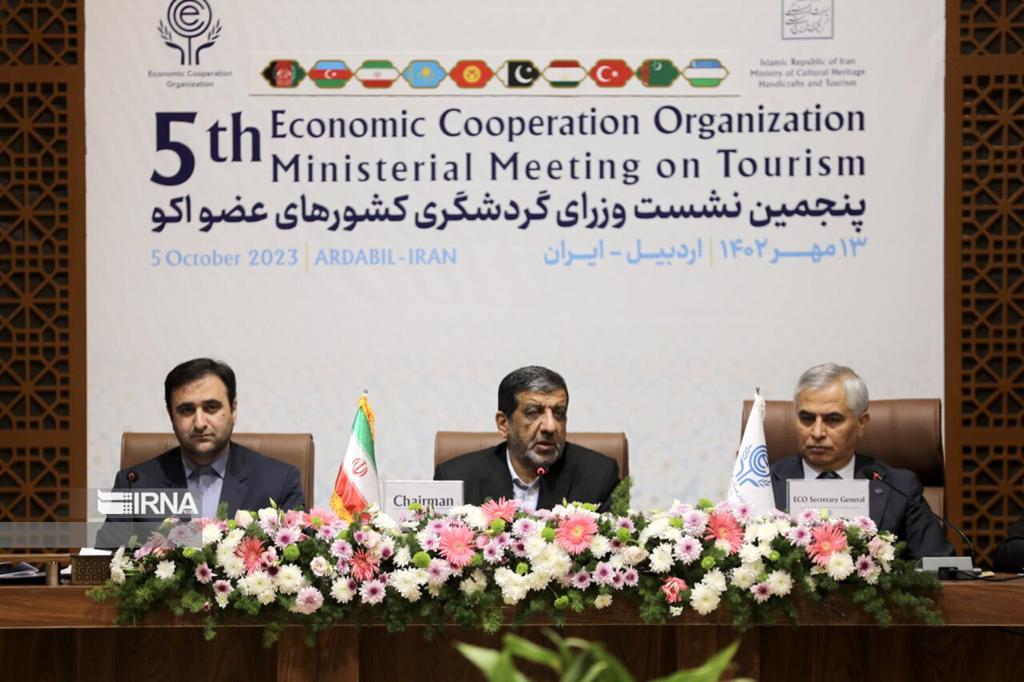
The Minister expressed gratitude to the ECO Member States for selecting Ardabil as the ECO Tourism Capital for the year 2023, and noted that hosting current meeting in Ardabil is one of the significant consequences of the celebrations.
Addressing the meeting, the ECO Secretary General Ambassador Khusrav Noziri emphasized the importance of meeting to review the implementation of status of the agreements concluded during the 4th Ministerial Meeting on Tourism, along with revisiting tasks and activities defined within the Samarkand Declaration. He stressed that this Ministerial Forum is a significant event in terms of development and implementation of joint tourism projects and programs. The Secretary General further stated that the Ardabil Declaration would facilitate smooth execution of ECO’s policy based and action-oriented programs for ensuring regional activities at pre-pandemic level.
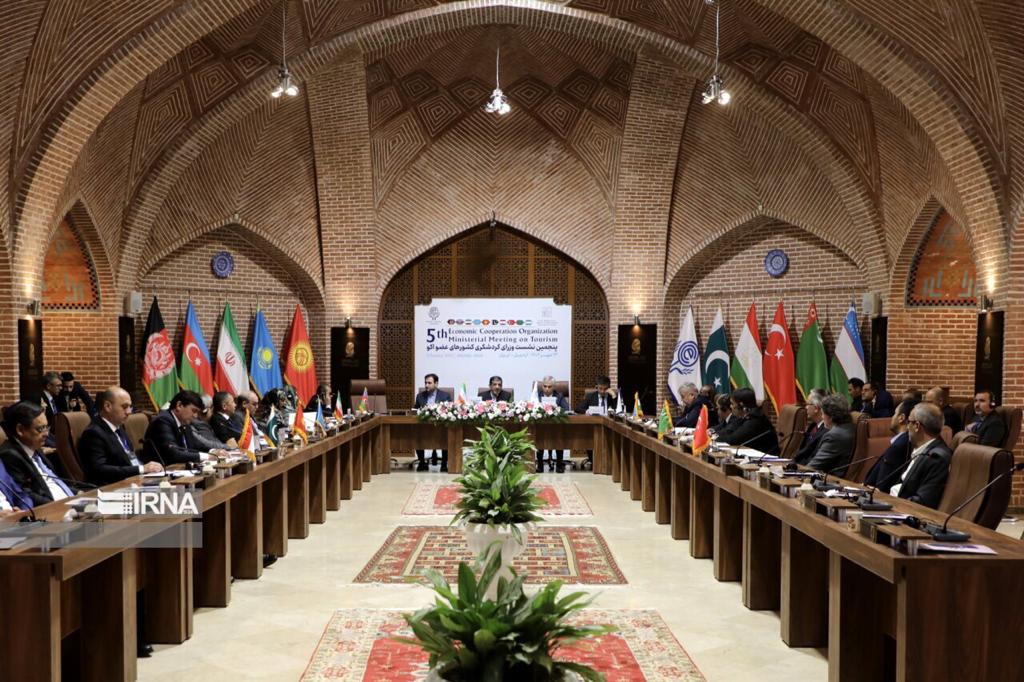
In addition, Ambassador Noziri mentioned that ECO is pursuing its cooperative relations with other regional and international tourism stakeholders and noted 25th Session of the General Assembly of the United Nations World Tourism Organization to be held in Samarkand, Uzbekistan on October 16-20, 2023. He added that this event would provide opportunities for collaboration in tourism sector and increase of the visibility of the ECO region.
During the meeting, heads of delegations from the ECO Member Countries delivered their statements, summarizing their national policies and ongoing tourism programs as well as engagements with regard to the promotion of tourism sector.
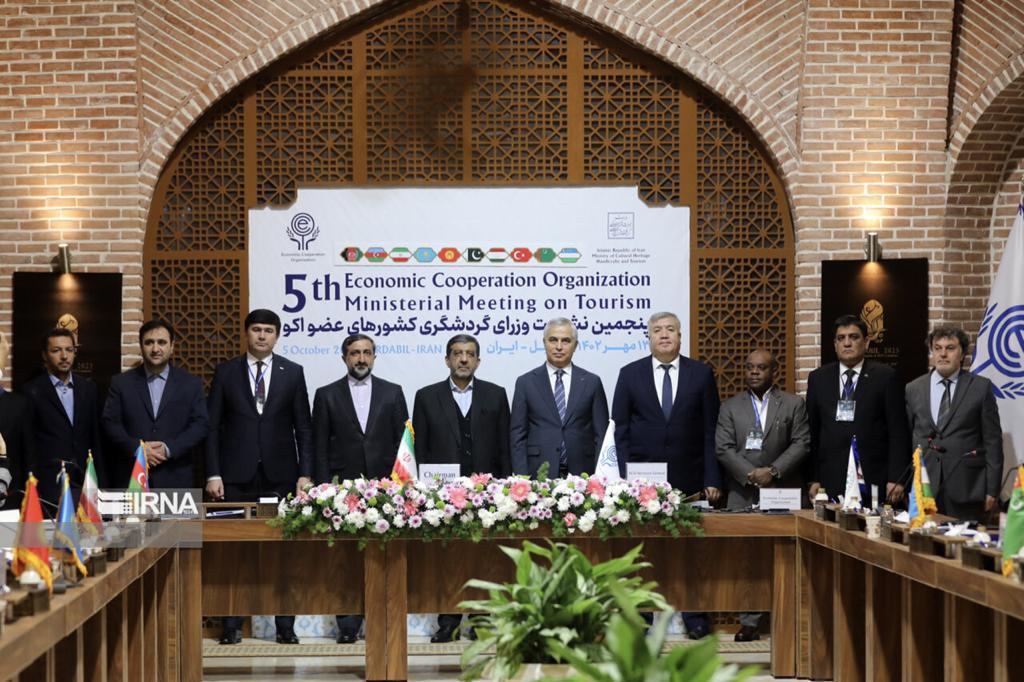
The meeting adopted the Ardabil Declaration outlining the areas for possible cooperation in tourism sector, and selected the city of Shusha in the Republic of Azerbaijan as the ECO Tourism Capital for 2026.

